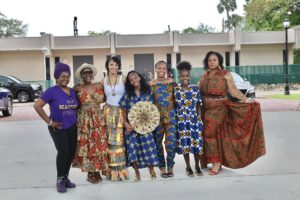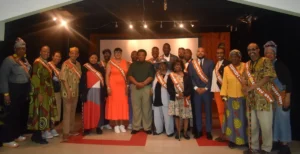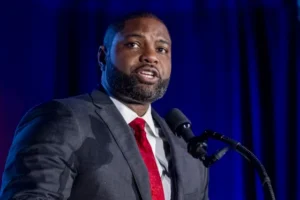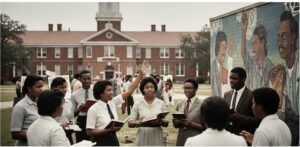At International African American Museum opening, a reclaiming of sacred ground for enslaved kin
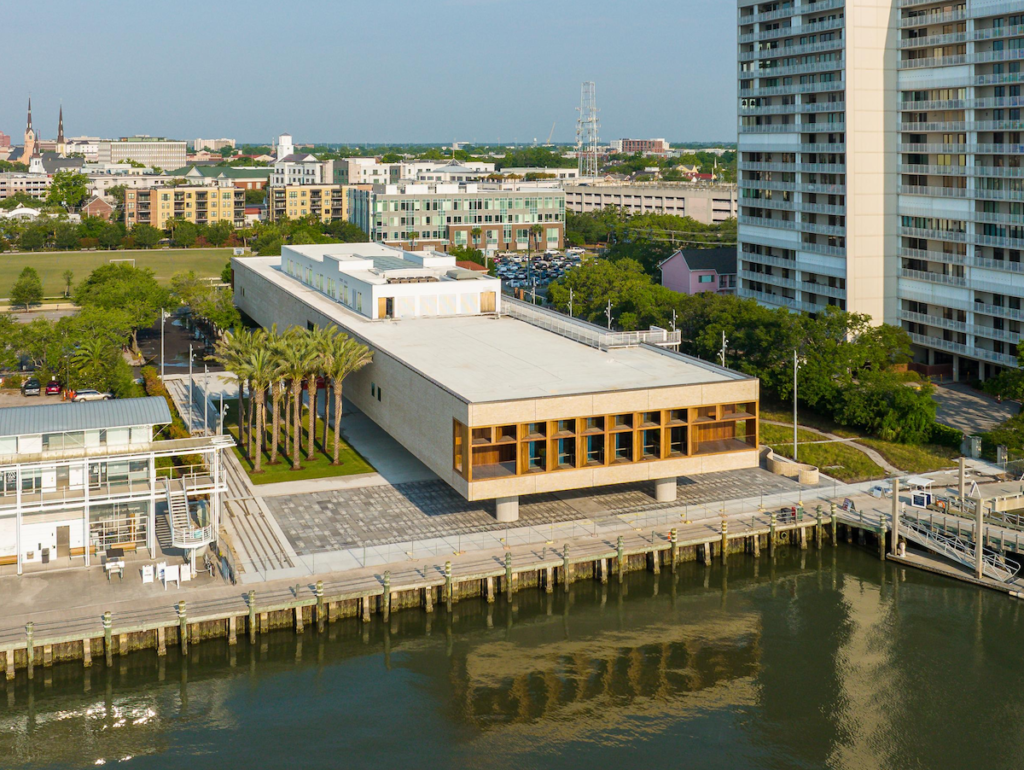
by AARON MORRISON Associated Press
When the International African American Museum opens to the public Tuesday in South Carolina, it becomes a new site of homecoming and pilgrimage for descendants of enslaved Africans whose arrival in the Western Hemisphere begins on the docks of the low country coast.
Overlooking the old wharf in Charleston at which nearly half of the enslaved population first entered North America, the 150,000-square-foot (14,000-square-meter) museum houses exhibits and artifacts exploring how African Americans’ labor, perseverance, resistance and cultures shaped the Carolinas, the nation and the world.
It also includes a genealogy research center to help families trace their ancestors’ journey from point of arrival on the land.
The opening happens at a time when the very idea of Black people’s survival through slavery, racial apartheid and economic oppression being quintessential to the American story is being challenged throughout the U.S. Leaders of the museum said its existence is not a rebuttal to current attempts to suppress history, but rather an invitation to dialogue and discovery.
“Show me a courageous space, show me an open space, show me a space that meets me where I am, and then gets me where I asked to go,” said Dr. Tonya Matthews, the museum’s president and CEO.
“I think that’s the superpower of museums,” she said. “The only thing you need to bring to this museum is your curiosity, and we’ll do the rest.”
The $120 million facility features nine galleries that contain nearly a dozen interactive exhibits of more than 150 historical objects and 30 works of art. One of the museum’s exhibits will rotate two to three times each year.
Upon entering the space, eight large video screens play a looped trailer of a diasporic journey that spans centuries, from cultural roots on the African continent and the horrors of the Middle Passage to the regional and international legacies that spawned out of Africans’ dispersal and migration across lands.
The screens are angled as if to beckon visitors towards large windows and a balcony at the rear of the museum, revealing sprawling views of the Charleston harbor.
One unique feature of the museum is its gallery dedicated to the history and culture of the Gullah Geechee people. Their isolation on rice, indigo and cotton plantations on coastal South Carolina, Georgia and North Florida helped them maintain ties to West African cultural traditions and creole language. A multimedia, chapel-sized “praise house” in the gallery highlights the faith expressions of the Gullah Geechee and shows how those expressions are imprinted on Black American gospel music.
On Saturday, the museum grounds buzzed with excitement as its founders, staff, elected officials and other invited guests dedicated the grounds in spectacular fashion.
The program was emceed by award-winning actress and director Phylicia Rashad and included stirring appearances by poet Nikky Finney and the McIntosh County Shouters, who perform songs passed down by enslaved African Americans.
“Truth sets us free free to understand, free to respect and free to appreciate the full spectrum of our shared history,” said former Charleston Mayor Joseph Riley, Jr. who is widely credited for the idea to bring the museum to the city.
Planning for the International African American Museum dates back to 2000, when Riley called for its creation in a State of the City address. It took many more years, through setbacks in fundraising and changes in museum leadership, before construction started in 2019.
Originally set to open in 2020, the museum was further delayed by the coronavirus pandemic, as well as by issues in the supply chain of materials needed to complete construction.
Gadsden’s Wharf, a 2.3-acre waterfront plot where it’s estimated that up 45% of enslaved Africans brought to the United States in the late 18th and early 19th centuries walked, sets the tone for how the museum is experienced. The wharf was built by Revolutionary War figure Christopher Gadsden.
The land is now part of an intentionally designed ancestral garden. Black granite walls are erected on the spot of a former storage house, a space where hunched enslaved humans perished awaiting their transport to the slave market. The walls are emblazoned with lines of Maya Angelou’s poem, “And Still I Rise.”
The museum’s main structure does not touch the hallowed grounds on which it is located. Instead, it is hoisted above the wharf by 18 cylindrical columns. Beneath the structure is a shallow fountain tribute to the men, women and children whose bodies were inhumanely shackled together in the bellies of ships in the transatlantic slave trade.
To discourage visitors from walking on the raised outlines of the shackled bodies, a walkway was created through the center of the wharf tribute.
“There’s something incredibly significant about reclaiming a space that was once the landing point, the beginning of a horrific American journey for captured Africans,” said Malika Pryor, the museum’s chief learning and education officer.
Walter Hood, founder and creative director of Hood Design Studios based in Oakland, California, designed the landscape of the museum’s grounds. The designs are inspired by tours of lowcountry and its former plantations, he said. The lush grounds, winding paths and seating areas are meant to be an ethnobotanical garden, forcing visitors to see how the botany of enslaved Africans and their descendants helped shape what still exists today across the Carolinas.
The opening of the Charleston museum adds to a growing array of institutions dedicated to teaching an accurate history of the Black experience in America. Many will have heard of, and perhaps visited, the Smithsonian’s National Museum of African American History and Culture in the nation’s capital, which opened in 2016.
Lesser known Afrocentric museums and exhibits exist in nearly every region of the country. In Montgomery, Alabama, The Legacy Museum: From Enslavement to Mass Incarceration and the corresponding National Memorial for Peace and Justice highlight slavery, Jim Crow and the history of lynching in America.
Pryor, formerly the educational director of the Charles H. Wright Museum of African American History in Detroit, said these types of museums focus on the underdiscussed, underengaged parts of the American story.
“This is such an incredibly expansive history, there’s room for 25 more museums that would have opportunities to bring a new curatorial lens to this conversation,” she said.
The museum has launched an initiative to develop relationships with school districts, especially in places where laws limit how public school teachers discuss race and racism in the classroom. In recent years, conservative politicians around the country have banned books in more than 5,000 schools in 32 states. Bans or limits on instruction about slavery and systemic racism have been enacted in at least 16 states since 2021.
Pryor said South Carolina’s ban on the teaching of critical race theory in public schools has not put the museum out of reach for local elementary, middle and high schools that hope to make field trips there.
“Even just the calls and the requests for school group visits, for school group tours, they number easily in the hundreds,” she said. “And we haven’t formally opened our doors yet.”
When the doors are open, all are welcome to reckon with a fuller truth of the Black American story, said Matthews, the museum president.
“If you ask me what we want people to feel when they are in the museum, our answer is something akin to everything,” she said.
“It is the epitome of our journey, the execution of our mission, to honor the untold stories of the African American journey at one of our nation’s most sacred sites.”


